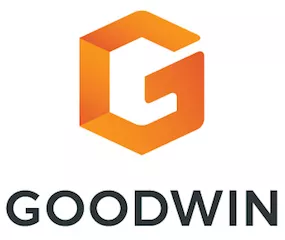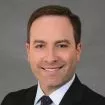- within Transport topic(s)
Welcome to Debt Download, Goodwin's monthly newsletter covering what you need to know in the leveraged finance market. Very soon leaves will be falling along with, many think, interest rates. What will autumn bring for the leveraged finance market? Read on to find out.
Note: Some of the links in this newsletter may redirect you to a subscription-only resource.
In the News
- The broadly syndicated loan (BSL) markets softened somewhat in August as a result of the second highest bids wanted in competition (BWIC) activity in recent memory driven by called CLOs and downbeat reactions following the July jobs report, though net supply remained positive at over $4.6 billion, according to CreditSights. Repayments in August rose to $54 billion, the highest on record, contributing to investors' need to deploy capital. The flex score in August was 4.8:1 in favor of price tightening, the least borrower-friendly flex since April. While spreads ticked up from July's multiyear low of S+313 to S+365 in August for single B loans, double B spreads were effectively unchanged at S+226. Through the third quarter to date, pro forma debt multiples in the context of dividend deals are now the highest they have been since the second quarter of 2022, when the Federal Reserve began aggressively raising interest rates.
- Sentiment improved in the private credit market in August, with pipelines building and a busier late summer than in prior recent years. All eyes, of course, will be on the Federal Reserve's decision on rate cuts at its next Open Market Committee meeting on September 16th and 17th. A rate cut was anticipated even before the September weak jobs report made it even more widely expected.
- While private credit market sentiment is positive, warnings of private credit defaults abound as well. Morningstar DBRS notes eight middle market defaults in the year to date (2.9% TTM), on pace to eclipse nine borrower defaults in all of 2024. Some market observers, however, including JPMorgan as reported in Bloomberg, report private credit default rates in excess of 5%. The difference lies in what gets counted as a "default." Counting only payment defaults or Chapter 11 filings arguably disguises the true default rate, which could include liability management exercises (LMEs) and some conversions of cash pay interest to payment in kind (PIK) interest. Of course, many healthy borrowers use PIK features to manage cash flow while executing a growth strategy. As such, utilization of a PIK toggle feature (so called "good PIK") shouldn't necessarily be lumped in as a default with "bad PIK" debt that is documented and incurred after closing by a distressed borrower.
- AI is in the news everywhere these days, including articles relating to debt raised to support artificial intelligence investments. While the largest transactions reported for "AI hyperscalers" like Meta and Oracle have grabbed the headlines, activity is broader: As PE Hub reports, investors in service providers and equipment makers for the power industry, which is expected to strain to meet the demands of AI, have been selling at elevated valuations. According to UBS, as reported by Bloomberg, private credit "without factoring in the mega deals...is already providing two to three times what the public markets are providing," running "around $50 billion a quarter for the last three quarters." Predictably, this has led to concerns by some about providing easy access to financing before AI has proven its long term revenue generating capability.
- Many of our readers are familiar with so-called "DQ lists"— lists of competitors and certain lenders restricted from buying into or participating in a loan in the secondary market. But the latest disqualification provisions in credit agreements now also may include a "disqualified counsel" construct; at least one such provision recently cleared the market in the private credit context. This feature borrows the "disqualified institution" concept, instead, to prevent certain law firms from representing lenders in leveraged finance transactions. While a DQ counsel feature is reported to have cleared the BSL market prior to 2025, the disqualified counsel in that provision had to be named in advance of the effective date of the credit agreement. So, presumably, the lenders in that deal were aware of the exclusion before entering into the agreement. In contrast, the recent language permits disqualification after closing, creating additional uncertainty for lenders (and questions as to whether such a post hoc prohibition is enforceable). Anti–cooperation agreement provisions, which attempt to block lenders ahead of a restructuring from agreeing among themselves to coordinate their actions as a group to strengthen their collective bargaining power (which have been attempted but are not reported to have cleared the market), are ultimately aimed at the same general objective as the DQ counsel feature: control by the borrower of creditor group formation. As Octus has noted, when taken together with the customary lender designation practices, DQ counsel provisions signal attempts by some borrowers to have more control over lender counsel selection throughout the life of the financing.
Goodwin Insights – Private Market Investments in Retirement Plans
As previewed in August's Debt Download and as long expected, the Trump administration has issued an executive order to encourage sponsors of 401(k) and other defined-contribution plans to consider offering access to alternative investments, such as, among other things, private equity and private credit. The order follows news that 2025 is on track to outstrip 2024 (itself a record year) for investment by wealthy individual investors into private credit. Goodwin has published a detailed alert on the order and is hosting an event for fund managers where it will be discussed extensively (watch this space for takeaways from the event). As we noted last month, major financial institutions see this as a significant new source of capital and are actively taking steps, including partnering with traditional brand name managers who run funds for 401(k) retirement plans, to offer retail investors access to private market and other alternative asset strategies. As we also noted previously, however, some observers continue to urge managers to exercise care consistent with protecting retail investors trying to save for retirement.
In Case You Missed It – Check out these recent Goodwin publications: Incentivizing Executives to Stay Through a Chapter 11 Asset Sale (Part I): Key Employee Retention Programs for Insiders; Antitrust & Competition Healthcare Quarterly Update Q2 2025; CFPB Enters a Proposed Agreement with Banking-as-a-Service Platform After Failure to Maintain Records Following Bankruptcy; The 15-Minute Founder's Guide: Pay-to-Play Transactions; Treasury Department Seeks Comment on Methods to Detect Illegal Activity Involving Digital Assets
The content of this article is intended to provide a general guide to the subject matter. Specialist advice should be sought about your specific circumstances.



